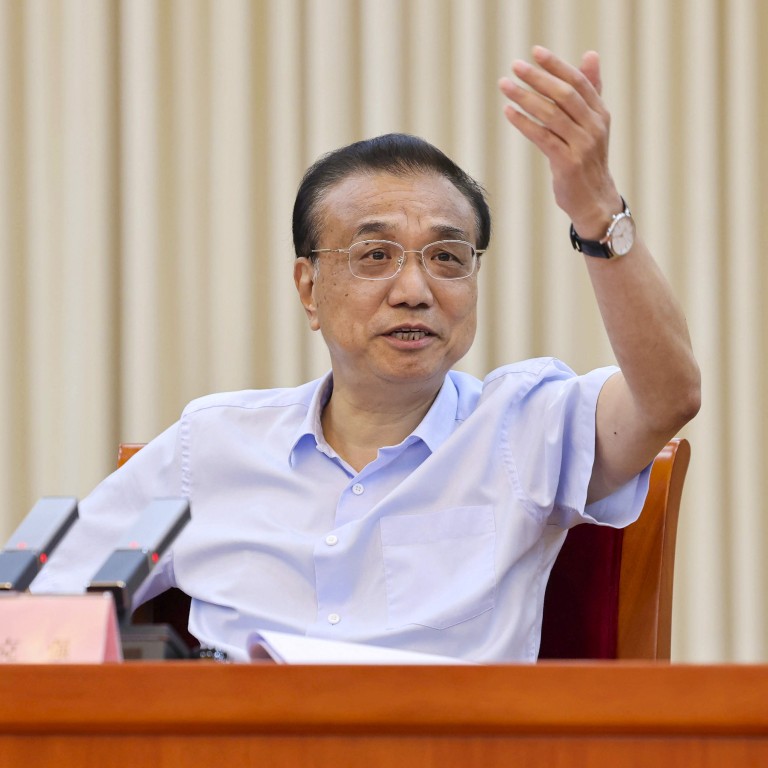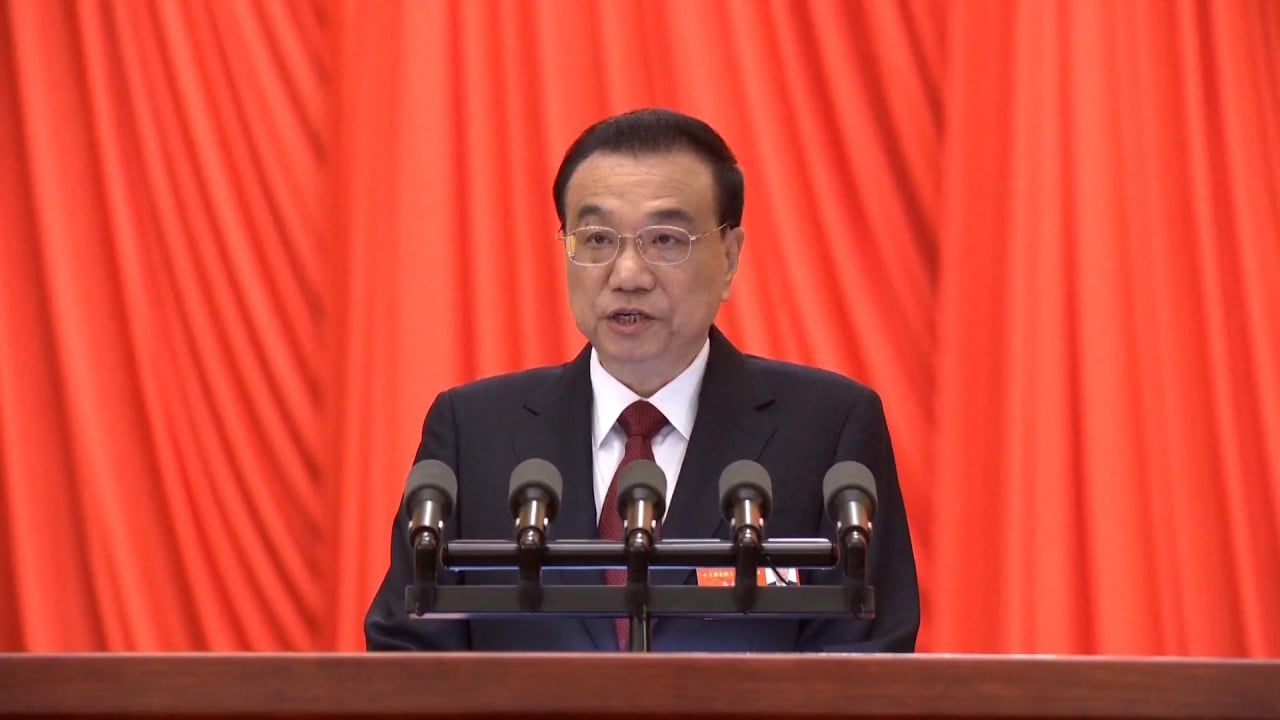
China’s Li Keqiang calls for new infrastructure push to shake off economic slowdown
- China’s State Council says it will channel funds towards construction of highways, waterways and port projects
- The targeted financing reflects Li’s long-standing caution towards flooding the economy with excess liquidity
China has announced a new round of infrastructure projects to be funded by bonds and interest subsidies for participating banks, underlining the government’s desperation to get the economy back on track and stabilise employment.
The government plans to raise 300 billion yuan (US$44.7 billion) by selling policy bonds and other financial instruments, Premier Li Keqiang said at Wednesday’s State Council meeting.
They will be issued by state-owned and policy banks, while the central government will provide two-year interest subsidies to encourage lending for the projects.
The proceeds must account for less than half of each project’s total investment, or serve as a bridge for infrastructure funded by local government special purpose bonds.
The targeted financing reflects Li’s long-standing caution about excess liquidity flooding the economy, although authorities are counting on bank credit to expand “effective investment” and boost the job market and household consumption.
The State Council, China’s cabinet, has its work cut out to reverse the country’s increasingly gloomy economic outlook, with lockdowns in Shanghai and other Chinese cities likely to have caused a contraction in growth in the second quarter, following expansion of 4.8 per cent in the first quarter, analysts said.
With China afraid to twist, what does zero-Covid mean for the economy?
The cabinet said on Wednesday it will build highways, waterways and port projects in the second half of this year and will try to guide financial institutions to provide long-term, low-cost lending rates.
“China’s transport network density remains relatively low in per capita terms. We must increase our investment in the weak links to drive up employment, consumption and economic sustainability,” the State Council said.
Infrastructure spending, which accounts for one third of national fixed-asset investment, rose by 8.2 per cent from a year earlier in the January-May period. Investment in the real estate sector dropped 4 per cent in the same period, defying government policy relaxations.
“It’s going to be hard to rely on the property sector to drive up the economy this year. Instead, we should try to lower its drag,” Yang Weimin, deputy director of the Chinese People’s Political Consultative Conference’s economic affairs committee, said at a forum on Thursday.
China urged to ‘learn from 2020’ or unemployment could hit early virus level
The premier ordered local governments to hire more migrant workers for projects, rather than providing cash subsidies to people, saying it would increase fiscal revenue and boost consumption in small cities.
China’s surveyed urban jobless rate eased slightly to 5.9 per cent in May, but was still higher than the annual control target of 5.5 per cent. The unemployment rate for those aged 16-24 hit a record high of 18.4 per cent in May.
State-owned enterprises have vowed to provide more jobs, while the Ministry of Science and Technology and the Ministry of Education said in a joint circular on Thursday that universities, state-owned research institutions and hi-tech parks should create research assistant positions to absorb as many graduates as possible.
A record 10.79 million college students will graduate this year.


